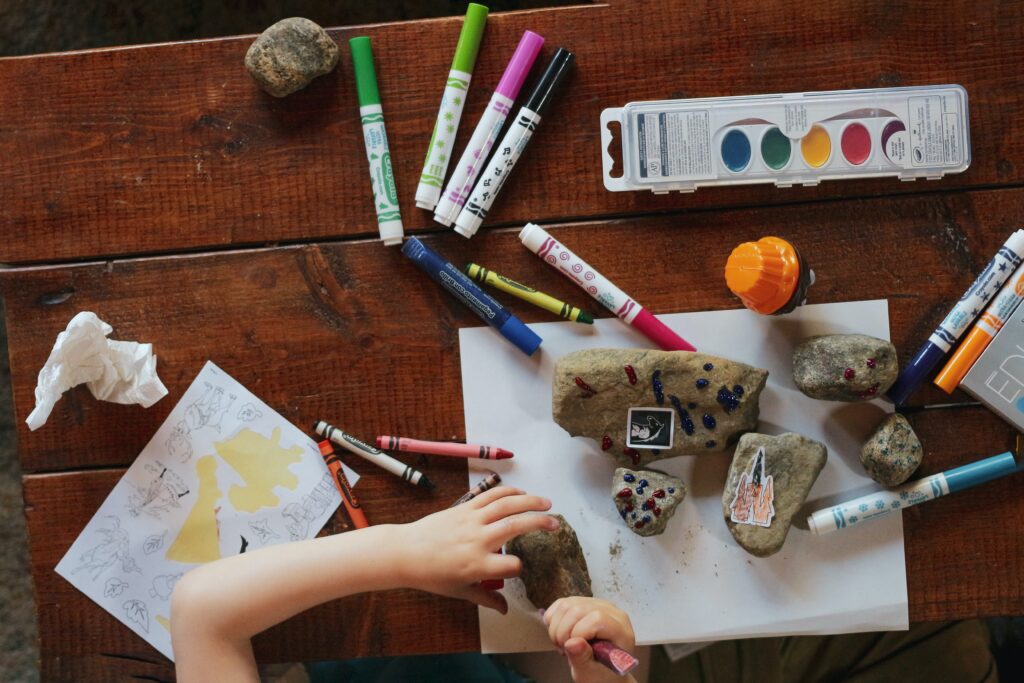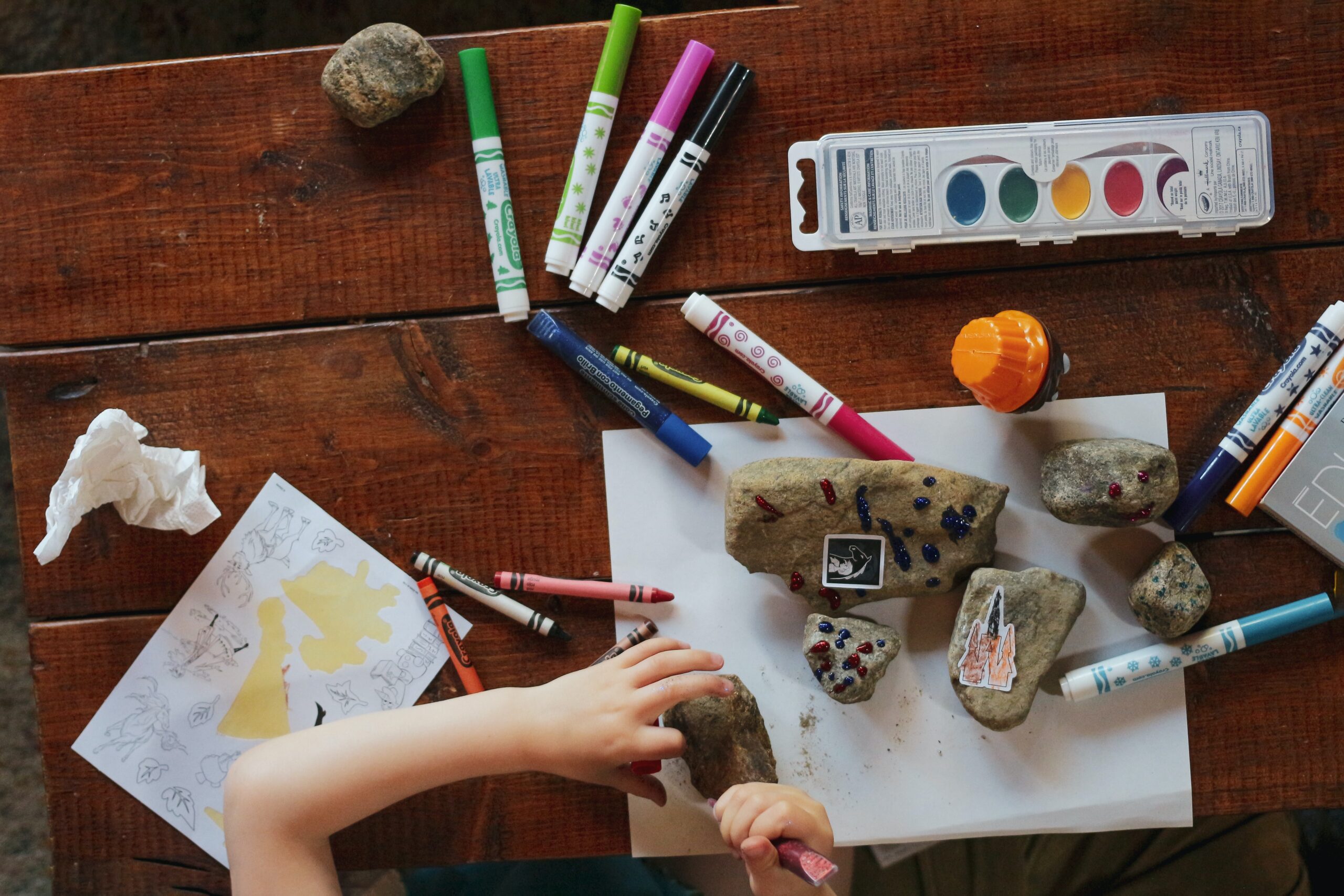Are you a fan of crafting and looking to explore new mediums? Have you ever wondered if you can use acrylic paint on shrinky dinks? Well, the answer is yes! In this article, we will discuss how you can use acrylic paint effectively on shrinky dinks to create beautiful and durable designs. So, grab your paintbrushes and let’s dive into the world of acrylic paint on shrinky dinks!

Choosing the Right Acrylic Paint
When it comes to choosing acrylic paint for your Shrinky Dinks, there are a few considerations to keep in mind. First, you’ll want to make sure you select a paint type that is suitable for this particular project. Acrylic paints come in different consistencies, such as heavy body, fluid, or craft paint. For Shrinky Dinks, it’s generally best to use craft acrylic paint, as it is thinner and allows for better coverage on the plastic surface.
Additionally, it’s crucial to check the compatibility of the acrylic paint with Shrinky Dinks. Some paints may not adhere well to the smooth surface of the plastic, resulting in poor color adhesion and durability. To ensure success, look for acrylic paints specifically labeled as suitable for plastics or multi-surface use. These types of paints are specially formulated to bond effectively with various surfaces, including plastic, and will provide you with the best results for your Shrinky Dinks project.
Preparing the Shrinky Dinks
Before applying the acrylic paint to your Shrinky Dinks, it’s important to properly prepare the surface to ensure optimal adhesion and longevity of the paint. Two key steps in this preparation process are cleaning the surface and sanding for better adhesion.
To clean the surface of your Shrinky Dinks, gently wipe them down with a soft, lint-free cloth or a mild soapy water solution. This will remove any dust, dirt, or oils that may be present, ensuring a clean and smooth surface for the paint to adhere to.
Sanding the Shrinky Dinks will further enhance the paint’s adhesion. Using a fine-grit sandpaper, gently sand the surface of the Shrinky Dinks in a circular motion. This will create a slightly rougher texture, allowing the paint to grip onto the plastic more effectively.
Priming the Shrinky Dinks
To improve the adhesion of the acrylic paint and ensure its longevity, it’s recommended to prime your Shrinky Dinks. Priming creates a base layer that helps the paint bond better to the plastic surface and reduces the risk of paint peeling or chipping off over time.
When priming Shrinky Dinks, it’s best to use a universal primer that is specifically formulated for plastic surfaces. These primers are designed to provide excellent adhesion and coverage on plastics, creating a suitable foundation for the paint to adhere to.
Apply thin coats of the universal primer to your Shrinky Dinks using a soft-bristled brush or a foam brush. Multiple thin coats allow for better coverage and drying between coats. This ensures a smooth and even base for the acrylic paint, allowing it to adhere properly and showcase its full color potential.
Applying Acrylic Paint
Choosing the right colors for your Shrinky Dinks project is an exciting part of the process. Acrylic paints come in a vast range of vibrant and beautiful hues, allowing you to unleash your creativity and bring your designs to life.
When selecting your colors, consider the overall theme or aesthetic you want to achieve. Will it be a bold and vibrant piece, or a more subtle and soft color palette? Play around with different color combinations and experiment to find what resonates with you.
Mixing and blending acrylic paints can add depth and dimension to your Shrinky Dinks creations. To achieve different shades and tones, mix your paints on a palette using a palette knife or a clean brush. By blending colors, you can create gradients and subtle transitions that make your artwork truly unique.
When it comes to painting techniques, there are endless possibilities. You can use a fine brush for intricate details, a flat brush for broad strokes, or even sponges and stamps for interesting textures. Explore different techniques and find what works best for your specific project.

Drying the Acrylic Paint
Once you’ve finished applying the acrylic paint to your Shrinky Dinks, it’s crucial to allow sufficient drying time before moving on to the next steps. Acrylic paint dries relatively quickly, but proper drying is essential for achieving the best results.
As a general rule of thumb, allow your painted Shrinky Dinks to air dry for at least 24 hours. This ensures that the paint has fully cured and adhered to the plastic surface. If you’re short on time or impatient to see the final results, you can use a hairdryer or a heat gun to speed up the drying process. However, be cautious not to overheat or warp the Shrinky Dinks.
Sealing the Acrylic Paint
Sealing your acrylic paint on Shrinky Dinks is a crucial step to protect the artwork and enhance its durability. By sealing the paint, you’ll create a barrier that prevents it from scratching, fading, or rubbing off over time.
One option for sealing acrylic paint on Shrinky Dinks is using spray sealant. Look for a sealant specifically designed for acrylic paints and plastics. Apply thin coats of the sealant, making sure to cover the entire painted surface evenly. Avoid spraying too close to prevent pooling or drips. Allow the sealant to dry completely between coats.
Alternatively, you can use a brush-on sealant. These sealants come in liquid form and can be applied with a soft brush. Again, ensure that the brush-on sealant is compatible with acrylic paints and plastics. Apply the sealant in thin, even coats, allowing each coat to dry fully before applying the next.

Curing the Acrylic Paint
Curing the acrylic paint on your Shrinky Dinks is another option to enhance the durability and longevity of your artwork. While not necessary, curing can provide added protection and increase the resistance of the paint against wear and tear.
One method of curing acrylic paint on Shrinky Dinks is by baking them in the oven. Place the painted Shrinky Dinks on a parchment-lined baking sheet and follow the manufacturer’s instructions for temperature and time. Usually, a low heat setting, such as 275°F (135°C), is recommended for approximately 15-20 minutes. After baking, allow the Shrinky Dinks to cool completely before handling.
Always follow the specific instructions provided by the manufacturer of the acrylic paint and the Shrinky Dinks. Each product may have different instructions for optimal results.
Tips and Tricks
Practice makes perfect, so don’t hesitate to experiment and practice techniques on test pieces before diving into your main project. This allows you to familiarize yourself with the paint, brushes, and techniques you’ll be using, ensuring a smoother experience when working on your actual Shrinky Dinks.
Speaking of techniques, don’t be afraid to think outside the box and explore different ways of applying the acrylic paint. Try using different tools, such as sponges, toothbrushes, or even your fingers, to create unique textures and effects. The possibilities are endless, so have fun and let your imagination run wild.
To maintain the quality of your brushes and keep your paints clean, make sure to clean your brushes and palette after each use. Rinse your brushes thoroughly with water or use a mild soap to remove any residual paint. Dry the brushes gently with a clean cloth and store them properly to prevent damage or fraying. Cleaning your palette regularly also helps prevent color contamination and ensures accurate color mixing.

Common Mistakes to Avoid
Using too much acrylic paint can lead to poor adhesion and excessive drying time. Always apply thin coats and allow each layer to dry before adding more paint. This not only ensures better adhesion but also prevents the paint from pooling, cracking, or peeling off the Shrinky Dinks.
Skipping the priming step is a common mistake that can lead to disappointing results. Priming helps create a proper bond between the acrylic paint and the plastic surface, improving adhesion and reducing the risk of paint flaking off. Don’t overlook this step as it significantly contributes to the longevity of your artwork.
Another mistake to avoid is not allowing sufficient drying time. Rushing this step can result in smudges, smears, or even the paint lifting off the surface when handling. Be patient and give your painted Shrinky Dinks enough time to dry completely before proceeding to the sealing or curing stages.
Alternative Products to Use
While acrylic paint is the go-to choice for Shrinky Dinks, there are alternative products you can explore for different artistic effects. Markers, such as permanent markers or alcohol-based markers, can provide vibrant colors and detailed line work. Colored pencils, on the other hand, offer a softer and more controlled approach, allowing for shading and blending. Oil pastels can also be used to create rich textures and vivid colors on Shrinky Dinks.
The choice of alternative products depends on your personal preference and the specific effects you want to achieve. Experimenting with different mediums can open up new artistic possibilities and inspire unique creations.
In conclusion, using acrylic paint on Shrinky Dinks can result in beautiful and long-lasting artwork. By considering the paint type, preparing the surface, priming, applying the paint with care, and properly drying, sealing, and even curing the paint, your Shrinky Dinks can become vibrant pieces of art that will bring joy for years to come. Don’t be afraid to experiment, practice, and explore alternative products to add your personal touch to these fun and versatile creations. Happy painting!




